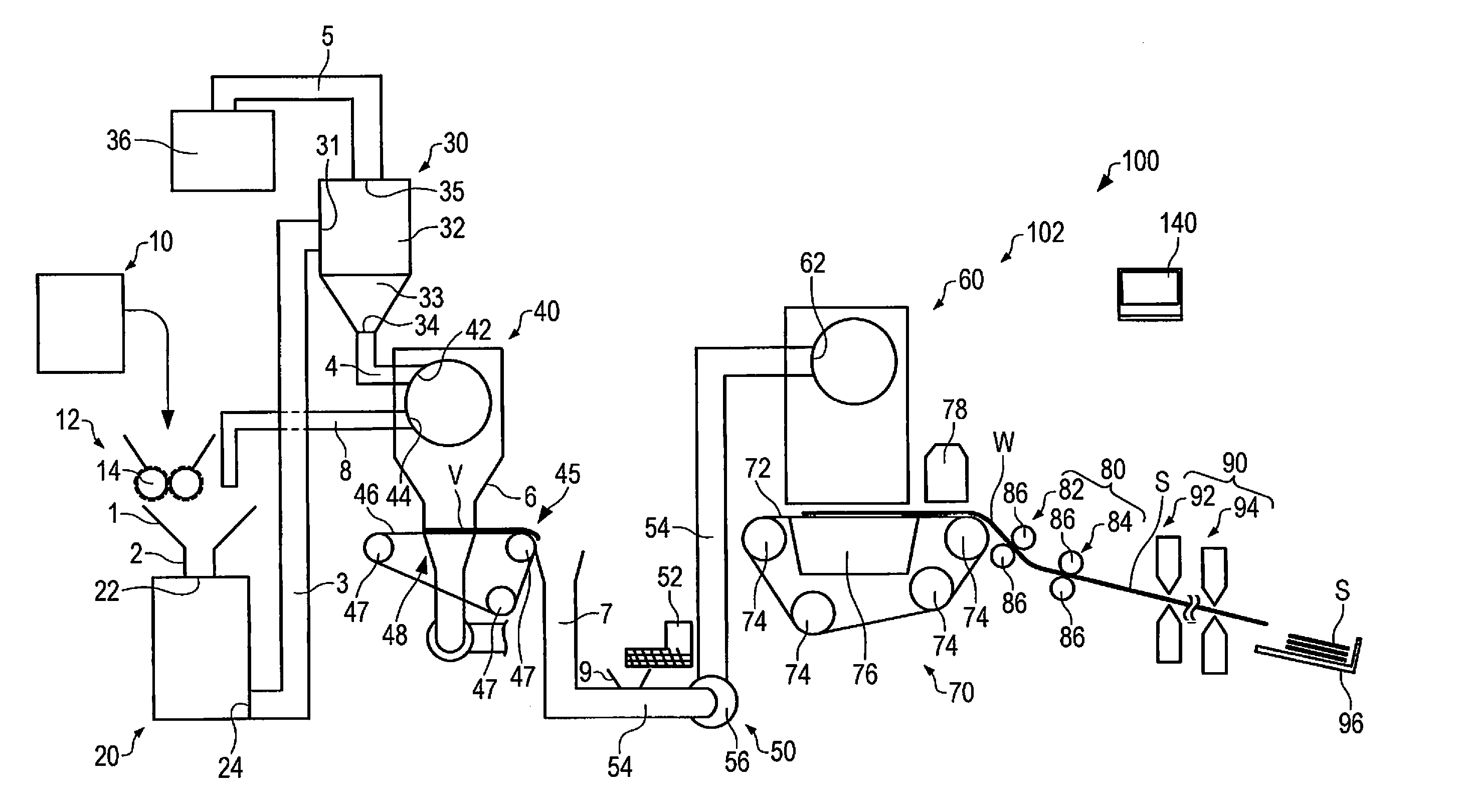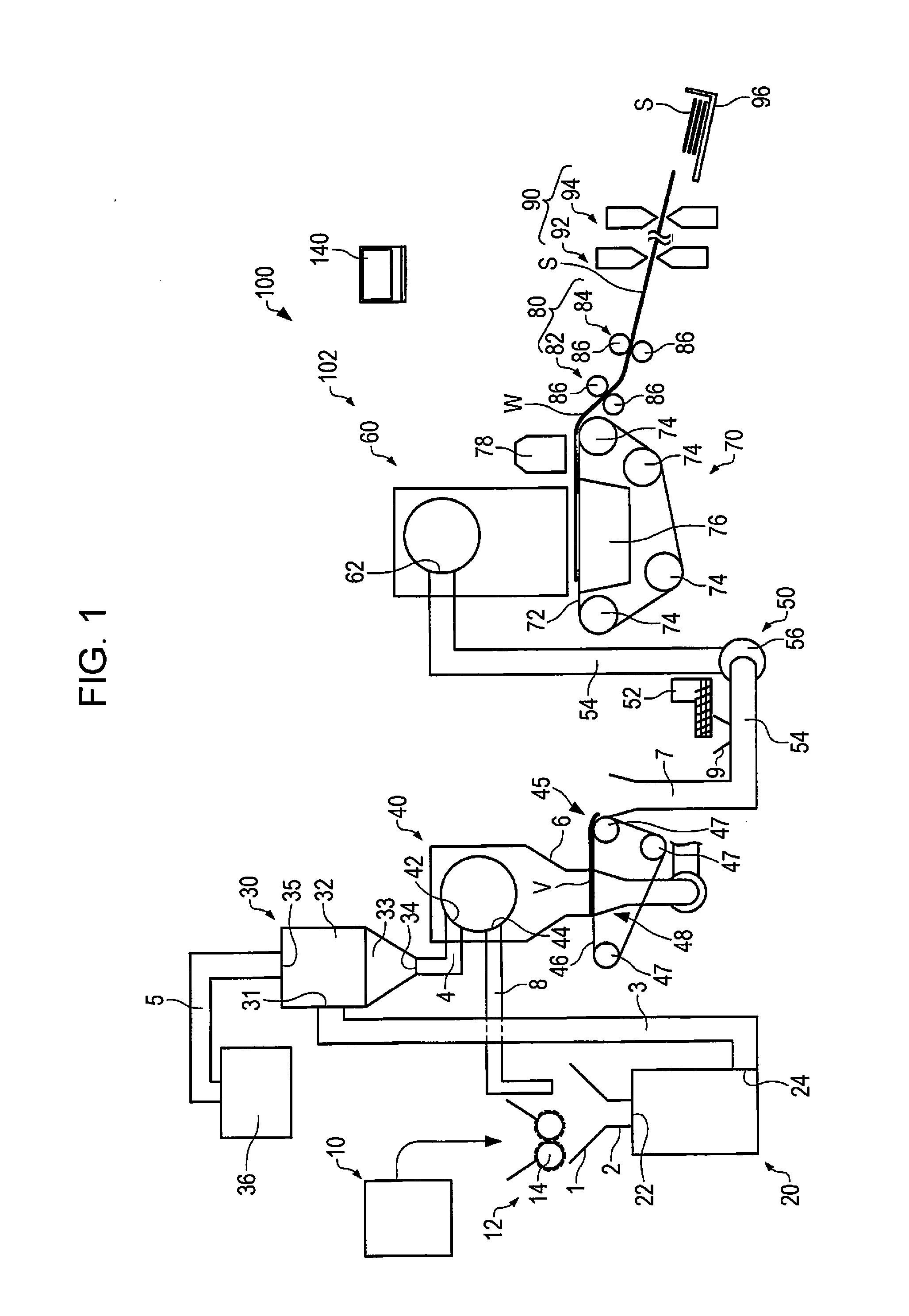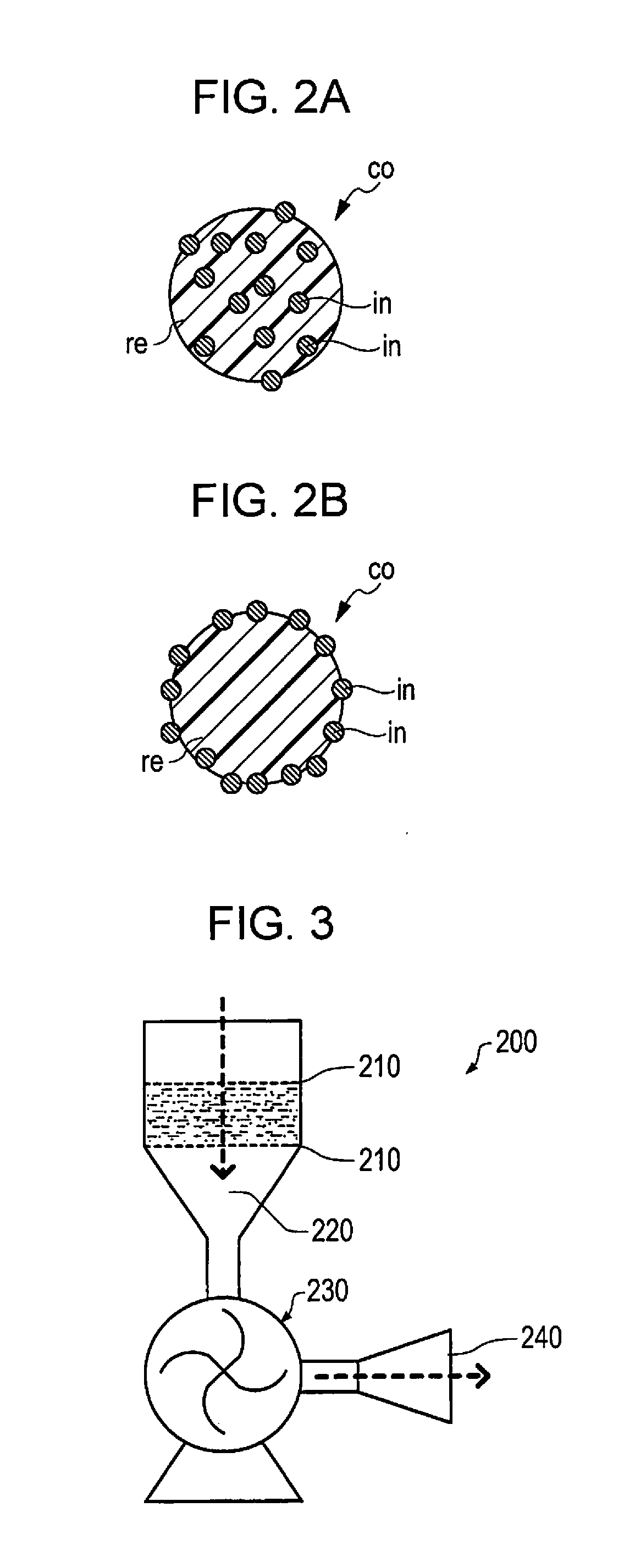Sheet manufacturing apparatus and sheet manufacturing method
- Summary
- Abstract
- Description
- Claims
- Application Information
AI Technical Summary
Benefits of technology
Problems solved by technology
Method used
Image
Examples
example 1
6.2. Example 1
[0143]
(1) resin particles (A1):100 g(2) inorganic fine particles (M1): 1.5 g
By feeding the above materials into a tabletop blender, and agitating at a tip speed of 30 m / s for 80 seconds, the surface of the resin particles (A1) is coated with the inorganic fine particles (M1). The presence of a coating was verified by observing the particle surface with an SEM. Verification was also performed according to changes in the angle of repose were also verified. This is determined from the angle of repose decreasing when the coating (covering by inorganic fine particles) is formed. The inorganic fine particles (M1) use titanium dioxide in which the volumetric primary particle diameter in which the surface is subjected to hydrophobizing treatment with alkyl silane is 14 nm.
example 2
6.3. Example 2
[0144]Fine particles of silicon dioxide with a volumetric primary particle diameter of 12 nm in which the surface is modified by trimethyl silane are the inorganic fine particles (M2). Other than using the inorganic fine particles (M2) instead of the inorganic fine particles (M1) used in Example 1, Example 2 is the same as Example 1.
example 3
6.4. Example 3
[0145]Fine particles of silicon dioxide with a volumetric primary particle diameter of 20 nm in which the surface is modified by trimethyl silane are the inorganic fine particles (M3). Other than using the inorganic fine particles (M3) instead of the inorganic fine particles (M1) used in Example 1, Example 3 is the same as Example 1.
PUM
| Property | Measurement | Unit |
|---|---|---|
| Percent by mass | aaaaa | aaaaa |
| Percent by mass | aaaaa | aaaaa |
| Particle size | aaaaa | aaaaa |
Abstract
Description
Claims
Application Information
 Login to View More
Login to View More - R&D
- Intellectual Property
- Life Sciences
- Materials
- Tech Scout
- Unparalleled Data Quality
- Higher Quality Content
- 60% Fewer Hallucinations
Browse by: Latest US Patents, China's latest patents, Technical Efficacy Thesaurus, Application Domain, Technology Topic, Popular Technical Reports.
© 2025 PatSnap. All rights reserved.Legal|Privacy policy|Modern Slavery Act Transparency Statement|Sitemap|About US| Contact US: help@patsnap.com



